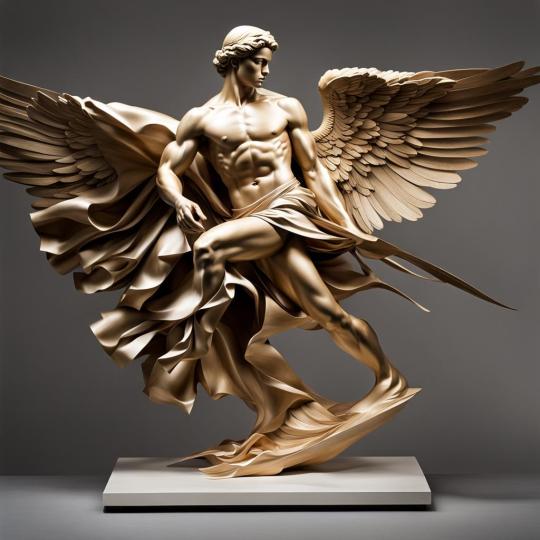#ArtThroughAges
Text

Step into a world of art and history at the Vatican Museums in Rome! Imagine discovering a captivating sculpture that beautifully blends classical elegance with a contemporary twist. While this artwork is a representation, our museums are home to a breathtaking collection of original art pieces that will transport you to another era. Immerse yourself in the beauty of the past and present. Ready to experience the allure of our museums? Book your tickets now http://www.thetravelers.rocks and explore the Vatican Museums!
Like
Comment
2 notes
·
View notes
Text
Neolithic pottery

Neolithic Pottery: Unveiling the Revolution
The discovery of pottery, a revolutionary innovation of the Neolithic era, remains shrouded in the mysteries of ancient times.
Serendipitous Transformation: From Clay to Stone
It is believed that Neolithic communities stumbled upon an extraordinary discovery by chance: the transformation of clay into a stone-like substance when exposed to the heat of fire.
Though the exact circumstances of this discovery remain unknown, what is certain is that this material quickly spread across Europe, enabling the creation of objects impossible to shape with stone.
Evolution of the Ceramics Creation Process
The evolution of the ceramics creation process is fascinating. The soft mixture, molded into vase shapes and left to air dry, was subsequently subjected to firing in a specially designed kiln.
From Trench to Dome Oven: Structural Innovations
This kiln, initially a simple trench with a fire at the center and vases arranged at the sides, transformed over time into a raised dome-shaped structure capable of reaching high temperatures and maintaining heat for an extended period.
The Miracle of Firing: From Clay to Ceramics
Through this process, clay transformed into the marvel that is ceramics or terracotta, taking on a vibrant reddish hue after firing.
From "Coiling" Technique to the Potter's Wheel: Turning Point in Vessel Formation
The oldest method, known as "coiling," involved creating a clay cylinder rolled to form the base of the vessel, later shaped by hand.
However, this technique produced vessels with thick and irregular walls. The turning point towards creating thinner and more symmetrical vessels only came with the invention of the potter's wheel, attributed to the Sumerians around 3000 BCE.
From "Cardial Ware" to Painting: Evolution of Decorations
Ancient craftsmen adorned their early vessels by impressing marks on fresh clay, often using small shell-like cardium shells, hence the term "cardial ware."
Over time, decorations became more intricate, including geometric patterns such as triangles, spirals, straight or wavy lines.
Artistic Expression: Painting on Vessels
The art of decoration further evolved with the introduction of painting, applying natural pigments mixed with animal fats to the still-fresh vessel.
This progression marked a significant chapter in the history of ceramics, making it not only functional but also an artistic expression of extraordinary beauty.
#NeolithicPottery#AncientInnovations#CeramicRevolution#ArchaeologyDiscoveries#HistoricalCraftsmanship#ArtistryInClay#NeolithicArt#PotteryEvolution#CraftsmanshipHistory#AncientArtForms#CeramicExpressions#NeolithicCulture#PotterysPast#ArtThroughAges#CulturalHeritage#PotteryTechniques#HistoricalArtisans#NeolithicHeritage#ArtisticTraditions#CraftingHistory
0 notes
Photo

My son Daniel gave me the #artthroughages #book which is awesome! Mi hijo Daniel me dió el libro arte a través de las edades, el cual es fabuloso! https://www.instagram.com/p/B4Y9C1rhrRE/?igshid=uvie16wzctnl
0 notes